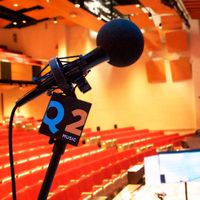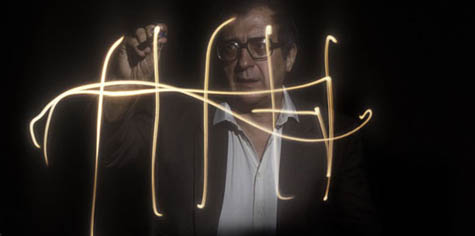The Glissando Headjoint for flute was invented by performer, composer, improviser, and inventor Robert Dick. Essentially, it adds a carrier tube to the standard C flute headjoint. The lip plate can be moved along the carrier tube to create true glissandi. Much of Dick’s work with the headjoint is in an improvisatory style; most of my work with it has been largely through commissioning works. One of the most rewarding things about this activity as a performer is seeing the variety of sounds composers require from the headjoint in their works. The minimal repertoire for glissando flute compared to the vastness of the rest of the flute repertoire across the centuries really highlights that the lack of precedent drives some pretty rewarding creativity. The first work that I performed with my newly-purchased headjoint in 2013 was Jay Batzner’s Dreams Grow Like Slow Ice. Written for glissando flute and electronics, it’s an evocative work that brings to mind an icy, barren landscape. I’ve had the pleasure of performing it fifteen times on three continents. I’ve worked with Jay on two other works involving the headjoint: Fire Walk, which is for solo glissando flute and is based on ideas from David Lynch’s Twin Peaks; and Used Illusions, a large work in three movements for glissando flute and concert band, based on Guns N’ Roses tunes. Andrew Rodriguez’s Highways for solo glissando flute brings to mind the sensations of driving at night: being lulled to sleep, occasional lights when traveling through towns, the mixing of dreams and waking consciousness. It’s a highly effective work that uses the glissando effect masterfully to blur the lines between being asleep and the reality outside the vehicle. The Dream Has Ended in Death by Aaron Jay Myers is based on a lithograph of the same name and uses a variety of sounds to create a mood representative of the visual art inspiration. It is particularly effective to project the lithograph behind the flutist during a performance. This work is also for solo glissando flute. Chamber music involving the Glissando Headjoint can also be effective. Wes Flinn’s Urban Legends X: Mothman is written for glissando flute and trombone, and the similar glissando effects are really heightened when utilized by both players. Similarly, Alan Theisen’s Pura Besakih, inspired by the temple complex in Indonesia of the same name, uses glissando flute and traditional C flute in a duet.
___________________
When writing for glissando flute, there are helpful resources to help composers find the sounds they want to hear. Several documents on Robert Dick’s website (http://robertdick.net/the-glissando-headjoint/) include fingering charts, which explain the extended lower range. His website also includes a selection of demonstration videos. Most importantly, work with your performer either before starting the composition process or throughout it to confirm your ideas will work within the limitations of the instrument. For example, the headjoint extends the lower range of the flute to a low A, but it can’t be played very loudly. Another limitation is just plain physics. The headjoint can only move so quickly, so some combinations of notes and headjoint placement within the carrier tube are simply impractical. Keeping the lines of communication open with your performer will reveal any of these quickly.
___________________
Tammy Evans Yonce, an Atlanta native, is a flutist, collaborative musician, writer, and professor. She is a dedicated new music performer who is particularly interested in the commissioning and teaching of new music. Dr. Yonce has commissioned over twenty works involving flute, many with a specific focus on creating new music for the Glissando Headjoint. She is Associate Professor of Music at South Dakota State University. Her recently-released album, Dreams Grow Like Slow Ice, includes several works for glissando flute. She can be found at tammyevansyonce.com and on Twitter @TammyEvansYonce.


